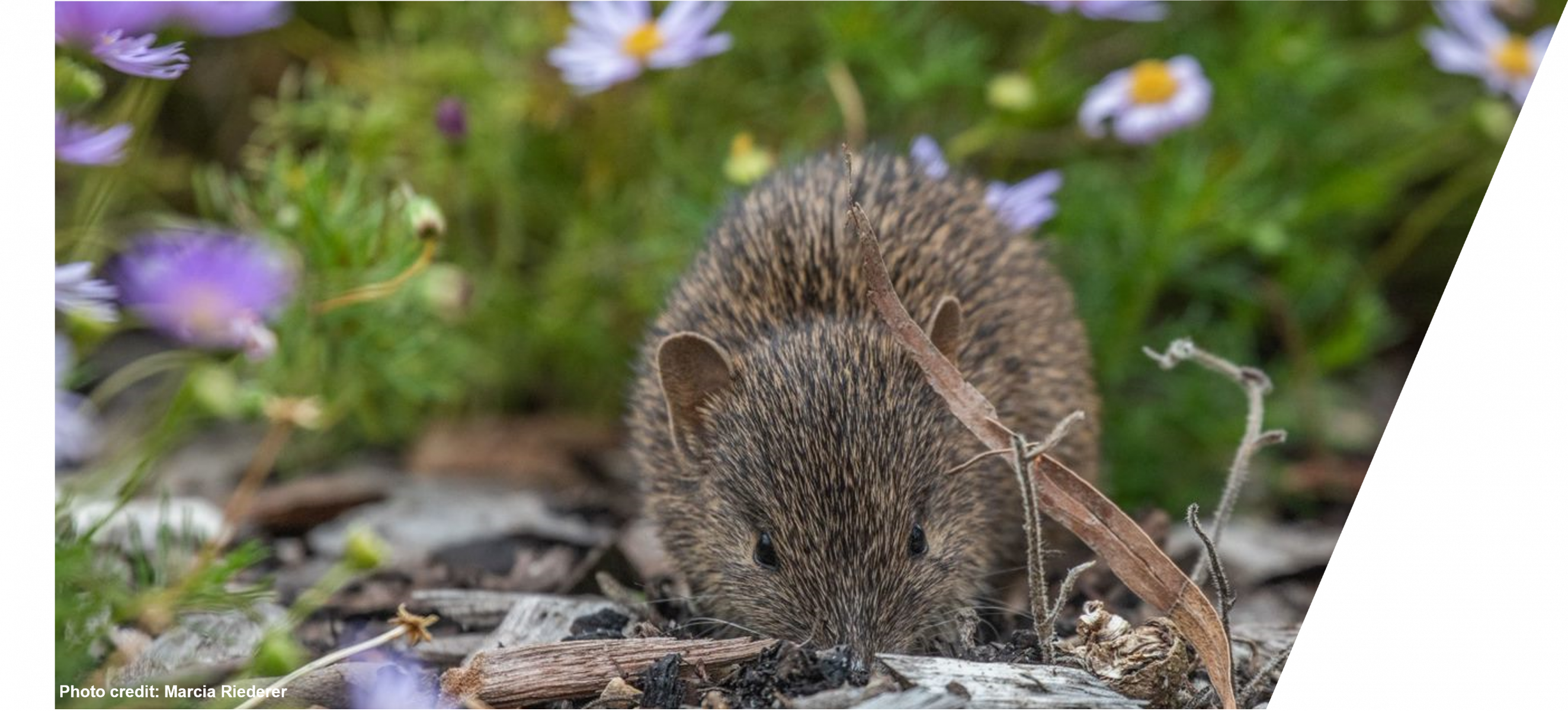On this page:
With a pointed nose, humped back and around the size of a rabbit, the southern brown bandicoot was once widespread in south-east Melbourne.
These small marsupials are also ecological engineers. In fact, a solitary bandicoot can turn over 3.9 tonnes of soil in a year, helping spread beneficial fungi, increasing nutrient turnover, and improving water penetration into the soil.
However, these little critters are getting harder to find, and their numbers have dwindled - they are now listed as nationally endangered.
Watch the video Meet the Southern Brown Bandicoot

Threats to southern brown bandicoot
The bandicoot is under threat for a range of reasons, including:
- removal of habitat
- introduced predators like foxes and cats
- busy roads isolating populations and causing roadkill
- baits and poisons.
How we're helping
Partnering with Royal Botanic Gardens Cranbourne
We’re proud to partner with the Royal Botanic Gardens Cranbourne (RBGC) on the Southern Brown Bandicoot Outreach Program. The aim is to help residents in the Casey-Cardinia community get to know their nosey neighbours. Through the program so far:
- over 18,000 people reached with bandicoot displays at public events, presentations, workshops, and guided walks. (N.B. this number also includes engagement with schools)
- three Big Bandicoot Backyard festivals at Cranbourne Gardens
- three school habitat gardens constructed
- 68 school and kindergarten lessons delivered
- a Bandicoot Brigade established to help residents access advice and resources
- 500 seed kits distributed to residents of bandicoot areas
- creation of communications resources including a bandicoot video series
- partnership with City of Casey Gardens for Wildlife program to offer personalised habitat gardening advice to local residents.
RBGC also teamed up with local children’s author Jo Watson to create Bindi and Buddy, a story about a boy and a bandicoot, that aims to spark curiosity and connection with this special animal. This was distributed to 250 kindergartens and primary schools.
Creating bandi-friendly suburbs
With the help of funds raised through the MSA Levy, we’re supporting developers, local government and community groups to design the bandi-friendly Botanic Ridge and Devon Meadows precincts, located nearby.
We want to see this beautiful and important species thrive while living side-by-side with residents in Melbourne’s south-eastern suburbs.
These precincts have shelter and foraging areas that allow these little critters to move safely to and from the gardens.
Watch the video to discover how to make your backyard bandicoot-friendly.
Boosting scientific understanding
The Arthur Rylah Institute has developed a Population Viability Analysis (PVA) model for the southern brown bandicoot. This model will help us prioritise management options and research by:
- identifying knowledge gaps for future research
- informing on-ground management decisions by evaluating the relative effectiveness of alternative management options.
The model can be updated as new knowledge comes to hand, and new management options are developed to improve subsequent management decisions over time.
Supporting healthy populations
A state-wide genetic rescue project is being developed to improve southern brown bandicoot populations' genetic fitness. This strategy will help address the problems associated with the fragmented distribution of Victoria’s populations.
Key documents
Page last updated: 19/02/24
